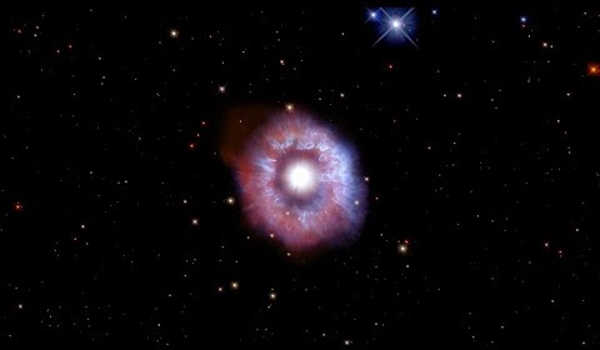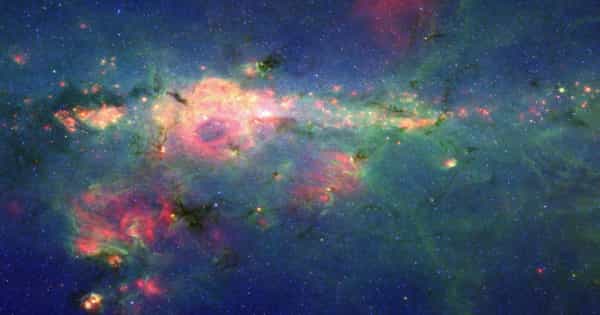AG Carinae (AG Car) is a star in the Carina constellation. It is one of the most luminous stars in the Milky Way and is classified as a luminous blue variable (LBV). Because of the great distance (20,000 light-years) and intervening dust, the star is rarely visible to the naked eye; its apparent brightness varies erratically between magnitude 5.7 and 9.0.
A nebula of ejected material surrounds the star at 0.4–1.2 pc distance. The nebula contains approximately 15 M, all of which were lost from the star around 10,000 years ago. In the interstellar medium around the star, there is an 8.8 pc wide empty cavity, which was presumably cleared by fast winds earlier in the star’s life.
AG Carinae appears to be in a transitional phase between a massive class O blue supergiant and a Wolf–Rayet star, with erratic pulsations, occasional larger outbursts, and rare massive eruptions. The spectral type ranges from WN11 at the visual minimum to an early A hypergiant at the maximum. The star’s visual minimum is around 65 R and 20,000–24,000 K, while its maximum is over 400 R and 8,000 K. At various minima, the temperature varies.

Distance controversy
Parallaxes from the Gaia mission’s data release 1 (DR1) suggest a much closer distance to AG Carinae and its neighbor Hen 3-519 than previously thought around 2 kpc. Both stars would be less luminous than LBVs, and it is hypothesized that they are former red supergiants with unusual properties due to binary evolution.
The earlier Hipparcos parallax for AG Carinae had a margin of error that was larger than the parallax itself, so it provided little information about its distance. The 6,000 pc distance is based on assumptions about the properties of LBVs, interstellar extinction models, and kinematical measurements. The Gaia DR1 parallax is 0.400.22 mas, calculated by combining the first year of Gaia measurements with Tycho astrometry. The Gaia team suggests allowing for an additional 0.3 mas of systematic error (i.e. added to the formal margin of error). According to a 2017 study, the systematic margin of error of 0.3 mas can be ignored, and the implied distance to AG Carinae is 2.501.41 kpc.
The parallax in Gaia Data Release 2 is 0.15320.0291 mas, implying a distance of around 6,500 pc. According to a 2019 observation, the most likely distance is 4,650 pc. Gaia Early Data Release 3 has a parallax of 0.19250.0165 mas, but with a significant amount of excess astrometric noise where there was none in Gaia DR2.
Information Source:
















